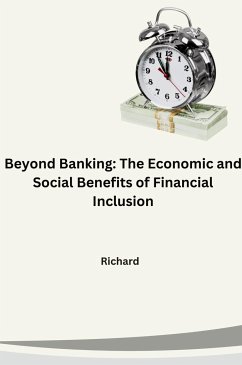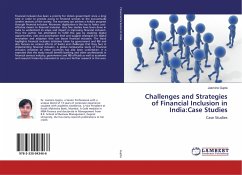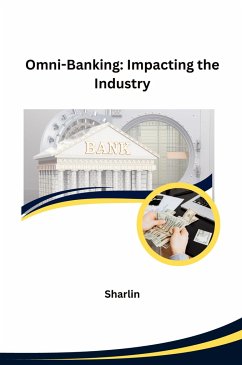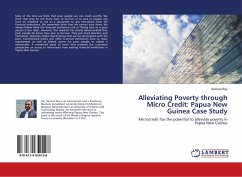
Microfinance: A Historical Perspective on Its Role in Poverty Reduction
Versandkostenfrei!
Versandfertig in 6-10 Tagen
28,10 €
inkl. MwSt.

PAYBACK Punkte
0 °P sammeln!
Microfinance, the concept of extending small loans to the poor, has captured global attention as a potential weapon against poverty. "Microfinance: A Historical Perspective on Its Role in Poverty Reduction" delves into the evolution of this idea and its effectiveness throughout history.The seeds of microfinance were sown in the 18th and 19th centuries with early credit initiatives. However, widespread interest emerged in the late 20th century:-Empowerment and Opportunity: Microfinance offered the promise of financial inclusion for those excluded from traditional banking systems, empowering the...
Microfinance, the concept of extending small loans to the poor, has captured global attention as a potential weapon against poverty. "Microfinance: A Historical Perspective on Its Role in Poverty Reduction" delves into the evolution of this idea and its effectiveness throughout history.The seeds of microfinance were sown in the 18th and 19th centuries with early credit initiatives. However, widespread interest emerged in the late 20th century:-Empowerment and Opportunity: Microfinance offered the promise of financial inclusion for those excluded from traditional banking systems, empowering them to build businesses and generate income.-Success Stories: Early microfinance initiatives showcased individuals lifting themselves out of poverty through microloans, fueling optimism and international support.-Focus on Sustainability: The development of microfinance institutions aimed to build a sustainable financial system for the poor, fostering self-reliance and community development.However, historical analysis reveals complexities:-Mixed Results: While success stories exist, the overall impact on poverty reduction remains debated. Microfinance may not be a universal solution for all.-Debt Burden Concerns: High interest rates and pressure to repay have led to concerns of debt traps for borrowers, potentially negating the benefits.-Need for Contextualization: Historical analysis highlights the importance of tailoring microfinance models to specific contexts and long-term economic needs.Despite these challenges, the historical perspective offers valuable lessons:-Responsible Practices: Client protection, fair interest rates, and a focus on financial literacy are crucial for microfinance to empower effectively.-Complementary Strategies: Microfinance should complement broader efforts aimed at education, infrastructure development, and market access for long-term poverty reduction.-Learning from the Past: Analyzing historical successes and failures is vital for refining microfinance practices and maximizing its positive impact.By understanding the historical trajectory of microfinance, we can move forward with a more nuanced understanding of its potential and limitations in the fight against poverty. This critical perspective allows us to develop more responsible and effective strategies to empower individuals and communities to build a brighter future.














